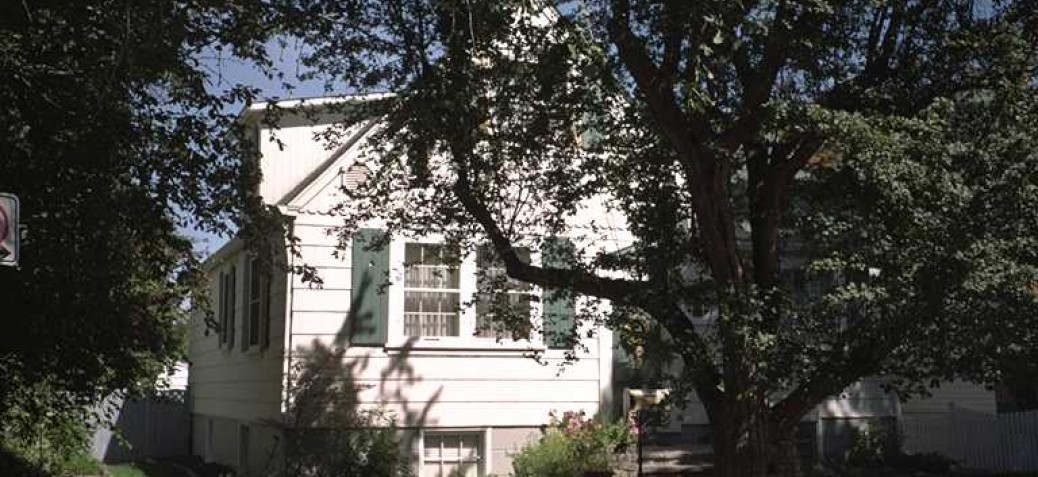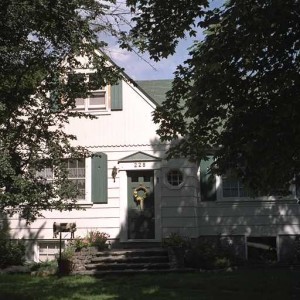Pettman House
Place Description
The Pettman House is a one and one-half storey wood-frame, Cape Cod style residence. The house is located on a residential street south of the downtown core, in Kelowna's historic Abbott Street neighbourhood amidst houses of a similar style, scale and age.
Heritage Value
Built in 1941, the Pettman House is of heritage value for its Cape Cod style architecture. The house is unusual because it was built during wartime, a time of austerity when there was little construction undertaken that was not considered crucial to the war effort. The Cape Cod style chosen for this house was a sensible stylistic mode for this austere time, given that it employs minimal ornamentation and is compact, practical and solid. The lack of ornamentation, and a reliance on form, plain materials and severely-clipped roofline, is evidence of the scarcity and expense of building materials during wartime and the onset of the influence of modernism on residential architecture.
Additionally, the Pettman House is of historical significance for its association with the Pettman family. The house was built for Harold Pettman who, with his brother Charles, operated the Pettman Brothers Grocery. Harold was well known in the community for his involvement in sports and was a well-known basketball player in the 1930s, and was later involved in the fruit industry.
Character Defining Elements
Key elements that define the heritage character of the Pettman House include its:
- mid-block location, with south facing orientation;
- residential form, scale and massing as expressed by it one and one-half storey height with partial raised basement and irregular rectangular plan;
- cross-gabled roof with clipped eaves;
- concrete foundation, and wood-frame construction with wide gauge, horizontal, shingle siding on the first storey and narrow gauge, vertical wooden siding with polygonal ends on the upper half-storey;
- exterior features such as small gabled roof hood supported by paired, scroll cut brackets over front entrance, simple wooden window and door trim with cornices, inset rear entrance, two rear projecting semi-octagonal bay windows with scroll cut support brackets, battened shutters with arched tops and drilled detail, rustic style rubble-stone clad front entrance steps, and large internal brick chimney; and
- asymmetrical fenestration with a variety of multi-paned double-hung and casement wooden-sash windows in multiple assembly, large, glass-block basement window and multi-paned octagonal foyer window.






